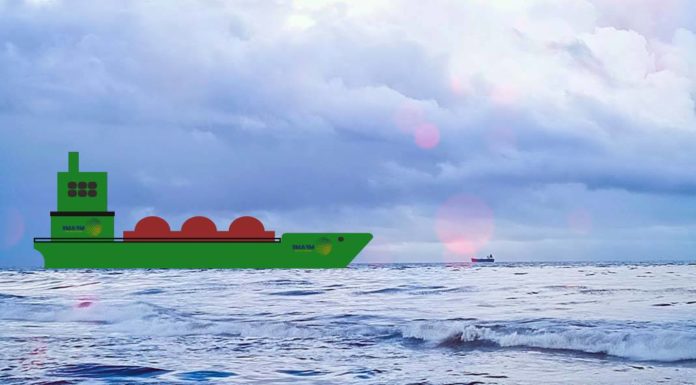Something doesn’t look right in CMA CGM’s short-term liquidity profile, given the massive widening in negative working capital since the latest IFRS accounting changes were implemented. That was the key takeaway when the French carrier reported mixed interim results for the first half (H1) of the year, says a Loadstar report.
Scary Number Stands Out
Some seasonal factors could have come into play yet, one scary number stands out in its accounts and that is derived from its net current assets, mainly due to surging borrowings and lease liabilities at the end of the second quarter (Q2).
In other words, its short-term funding needs, to be sorted within a year, are 1.5x the amount of cash and cash-like stuff it held on its balance sheet. This means it must churn out hefty free cash flows in the next six to 12 months to reduce the gap closer to $1bn or – more optimistically – closer to zero.
Unforgiving Bond Market
The bond market has been unforgiving with a bunch of high-yielding CMA CGM bonds – they have weakened significantly since 2018. Maturing between 2021 and 2025, they are now trading either well below par or near stress levels of around 80 cents on the dollar. This has occurred in a falling benchmark rates environment, pricing in a rapidly rising default risk.
To be sure, working capital can be temporarily negative – it was in the past at CMA CGM, to a lesser extent – and that was the most bullish view at the end of Q1, when short-term liquidity needs had widened to several billion dollars already for the first time in years.
How CMA CGM Addressing It?
First off, CMA CGM might find itself in the unenviable position of having to sell assets to repay, at least partly, its soaring short-term obligations (that’s not to mention its long-term ones), boosted by consolidated leases that previously were off-balance sheet.
Alternatively, if it doesn’t manage to churn out enough free cash flow (which is tight and projected, based on my estimates, to be significantly lower than its short-term needs through to 2020) in a worst-case scenario it may have to raise new equity (IPO anybody?) or strike a deal (with still rumoured Geodis?) with its lenders’ consent.
It could also repay existing debt with new debt or just roll over existing liabilities. But, my sources insist, opting for M&A to acquire assets and consolidate new gross cash balances in an equity-funded deal that may help its accounts look prettier is “a distinct possibility”.
Stuck in a Tricky Situation?
Far from being problematic until it receives the backing of its lenders (in January it said it was “making its banking covenants evolve” due to accounting changes), the current situation is a bit tricky for the best financial engineering artists in container shipping – in this respect, they have been beaten to the punch by the Hapag-Lloyd crew lately.
For the record, its larger public rival, AP Møller-Mærsk (APMM), was significantly better off at the end of H1, with positive working capital to the tune of $1.4bn, while its smaller competitor Hapag-Lloyd had negative working capital of €1.5bn.
From the tables below we can derive the difference between the two key items (current assets, “CA”, and current liabilities, “CL”, unadjusted) worth paying attention to here; they show what CA and CL, and the implied delta, looked like in previous years before the implementation of IFRS rules, as well as ahead of the consolidation of 3PL Ceva Logistics.
- At the end of 2018, working capital was negative only to the tune of $191m, while one year earlier it stood at -$339m.
- By comparison, in mid-2018, unadjusted CA came in at $6.18bn while CL were $6.3bn, yielding a negative working capital of $157m.
- And even two years earlier in mid-2016, when it wasn’t exactly a smooth ride for the carrier in terms of liquidity management, its negative working capital needs, at -$2.6bn, were about $1bn lower than now.
- With current liabilities at $10.4bn (see the first Tab.1 above), and current assets at $6.9bn its negative working capital stood at -$3.45bn at the end of H1.
Mildly negative working capital in previous years compares with a mid-2019 situation that is manageable assuming we are really bullish on its cash flow productivity, also trusting its track record when certain liabilities were off-balance sheet. Working capital management was less effective in 1H 19 (-$128) than in 1H 18 (+$364.5), by the way.
Banking on Stronger Free Cash
That said, CMA CGM is arguably banking on a much stronger free cash flow performance going forward.
- With $1.37bn of gross cash on its balance sheet and a huge pile of long-term debt (borrowing and lease liabilities hit almost $16bn in H1), in the short term its adjusted free cash flow (excluding additional M&A-related cash outlays
- Also excluding significant efficiency measures, which have yet to show) might come in, under a bull-case scenario, at about $2bn through to the end of H1 20.
- Hopefully, this would keep its short-term liquidity in check and creditors at bay, before new vessel orders must be paid for starting 2021.
Of course, while it’s very premature to speculate about state intervention, we all know how this story is going to end if things don’t go according to plan.
Did you subscribe to our daily newsletter?
It’s Free! Click here to Subscribe!
Source: The LoadStar



















